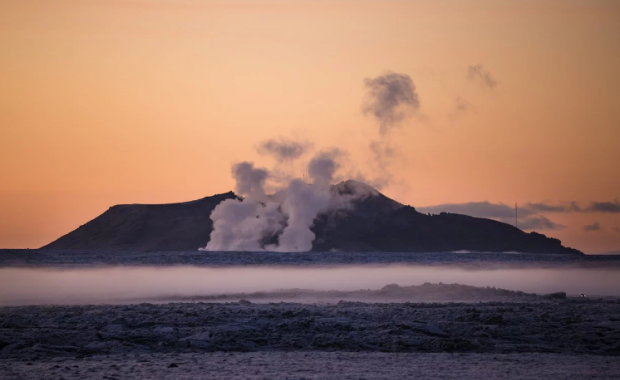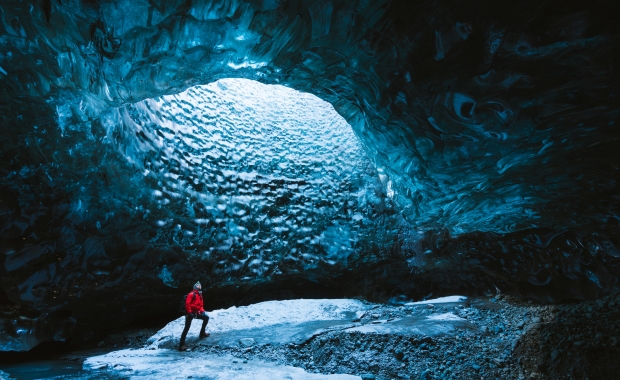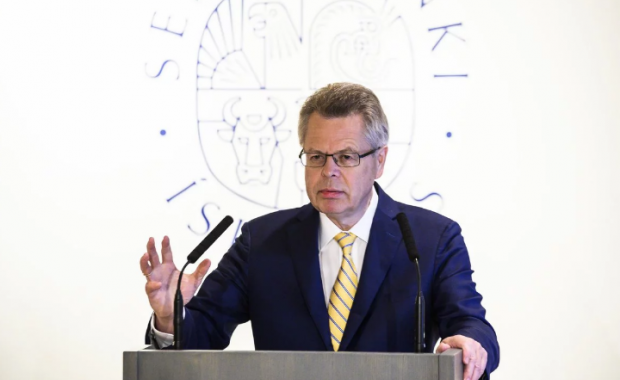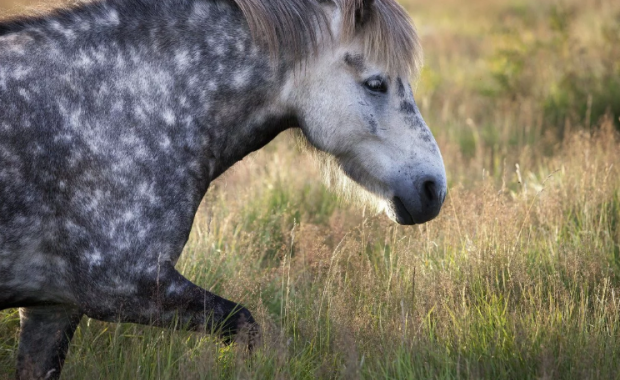The National Commissioner of the Icelandic Police, in association with the District Commissioner in Sudurnes in Iceland, has declared an uncertainty phase due to observed unusual land uplift located in the south-west part of the Reykjanes peninsula. The Icelandic Meteorological Office has furthermore changed the aviation colour code to yellow.
The suspected cause of the uplift is an inflow of magma in the crust. At the same time a swarm of earthquakes in the region has taken place, but such earthquake swarms are not uncommon in the region.
An inflation has been detected since January 21st and is centred just west of Mt. Thorbjorn on Reykjanes peninsula. The inflation is occurring on plate boundaries and within the volcanic system of Svartsengi which is either considered a separate system or part of the Reykjanes volcanic system. The last known eruption was during Reykjanes fires, which occurred between 1210-1240 AD.
The Civil Protection Authorities and stakeholders are closely coordinating and monitoring the situation but at this stage the situation does not yet warrant the activation of the National Crisis and Coordination Centre.
Community meeting will be held in the municipality of Grindavík tomorrow, Monday January 27th at 16:00 hrs local time at the local sports hall. At the meeting the civil protection authorities and scientists will give an update of the situation.
Uncertainty phase is characterized by an indication of event that could pose a health- or security threat to people, communities or the environment.
For further information follow the Civil Protection updates on Facebook or Catalogue of Icelandic volcanos.

An InSAR measurement (InSAR: interferometric analysis of synthetic aperture radar images) based on satellite information showing the inflation during the period from Jan 18-24. The red colour indicates an inflation of around 15mm during the period. (Vincent Drouin, ISOR). Picture/Icelandic Meteorological Office
Possible scenarios
The activity has only been ongoing for a few days and it is uncertain if it will escalate to more serious activity. Based on current information, the following scenarios are considered possible, without stating which is most likely or within what timeframe.
1. If the inflation is due to magma accumulation:
• Magma accumulation will cease soon without further activity.
• Magma accumulation continues for some time without further activity.
• Magma accumulation will lead to a magma intrusion.
• Magma accumulation will lead to magma intrusion and eruption (effusive fissure eruption).
• Magma accumulation triggers seismic activity with larger earthquakes (up to M6.0).
2. If the inflation is not caused by magma accumulation:
• The inflation might be linked to tectonic activity and lead to larger earthquakes (up to M6.0).
The National Commissioner of the Icelandic Police in cooperation with the Police Commisioner on Reykjanes has declared a state of uncertainty. A public community meeting will be held in Grindavík tomorrow, Monday January 27th at 4pm. There the situation will be discussed with the Department of Civil Protection, scientists and first responders. The 24/7 monitoring of the area has been increased at IMO.
The National Commissioner of the Icelandic Police, in association with the District Commissioner in Sudurnes in Iceland, has declared an uncertainty phase due to observed unusual land uplift located in the south-west part of the Reykjanes peninsula. The Icelandic Meteorological Office has furthermore changed the aviation colour code to yellow.
The suspected cause of the uplift is an inflow of magma in the crust. At the same time a swarm of earthquakes in the region has taken place, but such earthquake swarms are not uncommon in the region.
An inflation has been detected since January 21st and is centred just west of Mt. Thorbjorn on Reykjanes peninsula. The inflation is occurring on plate boundaries and within the volcanic system of Svartsengi which is either considered a separate system or part of the Reykjanes volcanic system. The last known eruption was during Reykjanes fires, which occurred between 1210-1240 AD.
The Civil Protection Authorities and stakeholders are closely coordinating and monitoring the situation but at this stage the situation does not yet warrant the activation of the National Crisis and Coordination Centre.
Community meeting will be held in the municipality of Grindavík tomorrow, Monday January 27th at 16:00 hrs local time at the local sports hall. At the meeting the civil protection authorities and scientists will give an update of the situation.
Uncertainty phase is characterized by an indication of event that could pose a health- or security threat to people, communities or the environment.
For further information follow the Civil Protection updates on Facebook or Catalogue of Icelandic volcanos.
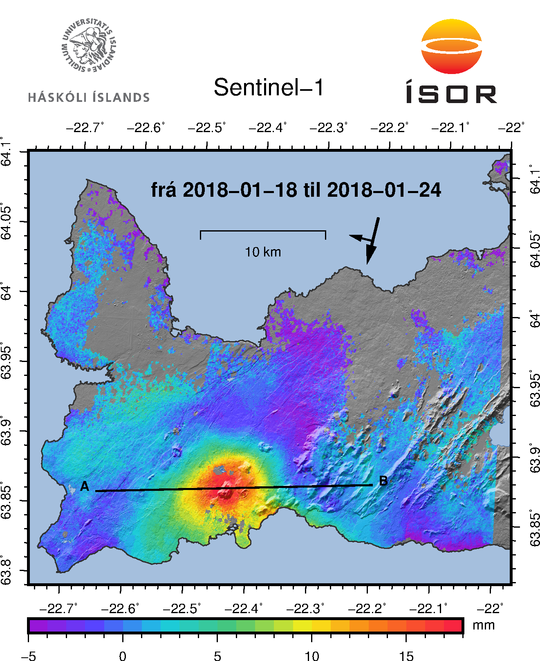
An InSAR measurement (InSAR: interferometric analysis of synthetic aperture radar images) based on satellite information showing the inflation during the period from Jan 18-24. The red colour indicates an inflation of around 15mm during the period. (Vincent Drouin, ISOR). Picture/Icelandic Meteorological Office
Possible scenarios
The activity has only been ongoing for a few days and it is uncertain if it will escalate to more serious activity. Based on current information, the following scenarios are considered possible, without stating which is most likely or within what timeframe.
1. If the inflation is due to magma accumulation:
• Magma accumulation will cease soon without further activity.
• Magma accumulation continues for some time without further activity.
• Magma accumulation will lead to a magma intrusion.
• Magma accumulation will lead to magma intrusion and eruption (effusive fissure eruption).
• Magma accumulation triggers seismic activity with larger earthquakes (up to M6.0).
2. If the inflation is not caused by magma accumulation:
• The inflation might be linked to tectonic activity and lead to larger earthquakes (up to M6.0).
The National Commissioner of the Icelandic Police in cooperation with the Police Commisioner on Reykjanes has declared a state of uncertainty. A public community meeting will be held in Grindavík tomorrow, Monday January 27th at 4pm. There the situation will be discussed with the Department of Civil Protection, scientists and first responders. The 24/7 monitoring of the area has been increased at IMO.


